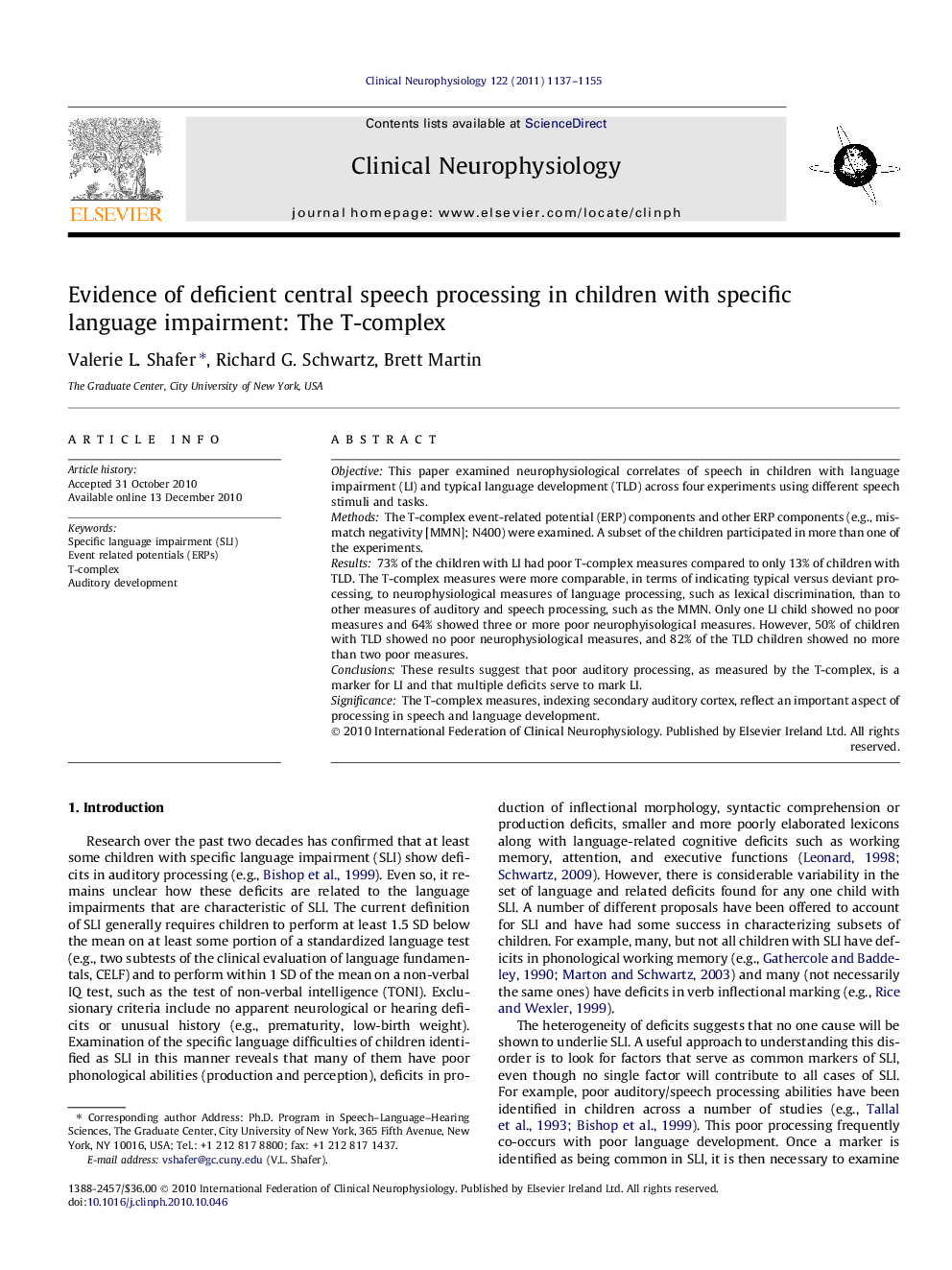| Article ID | Journal | Published Year | Pages | File Type |
|---|---|---|---|---|
| 3044295 | Clinical Neurophysiology | 2011 | 19 Pages |
ObjectiveThis paper examined neurophysiological correlates of speech in children with language impairment (LI) and typical language development (TLD) across four experiments using different speech stimuli and tasks.MethodsThe T-complex event-related potential (ERP) components and other ERP components (e.g., mismatch negativity [MMN]; N400) were examined. A subset of the children participated in more than one of the experiments.Results73% of the children with LI had poor T-complex measures compared to only 13% of children with TLD. The T-complex measures were more comparable, in terms of indicating typical versus deviant processing, to neurophysiological measures of language processing, such as lexical discrimination, than to other measures of auditory and speech processing, such as the MMN. Only one LI child showed no poor measures and 64% showed three or more poor neurophyisological measures. However, 50% of children with TLD showed no poor neurophysiological measures, and 82% of the TLD children showed no more than two poor measures.ConclusionsThese results suggest that poor auditory processing, as measured by the T-complex, is a marker for LI and that multiple deficits serve to mark LI.SignificanceThe T-complex measures, indexing secondary auditory cortex, reflect an important aspect of processing in speech and language development.
